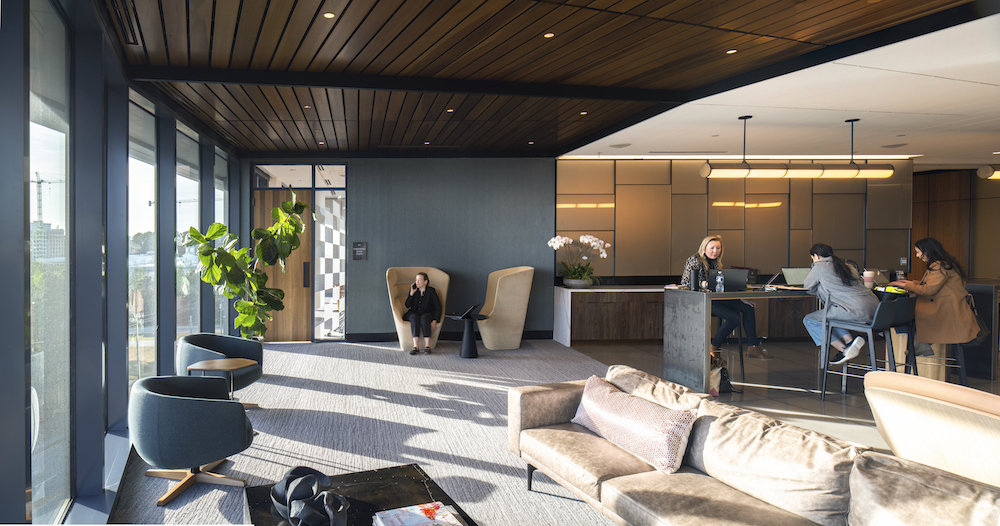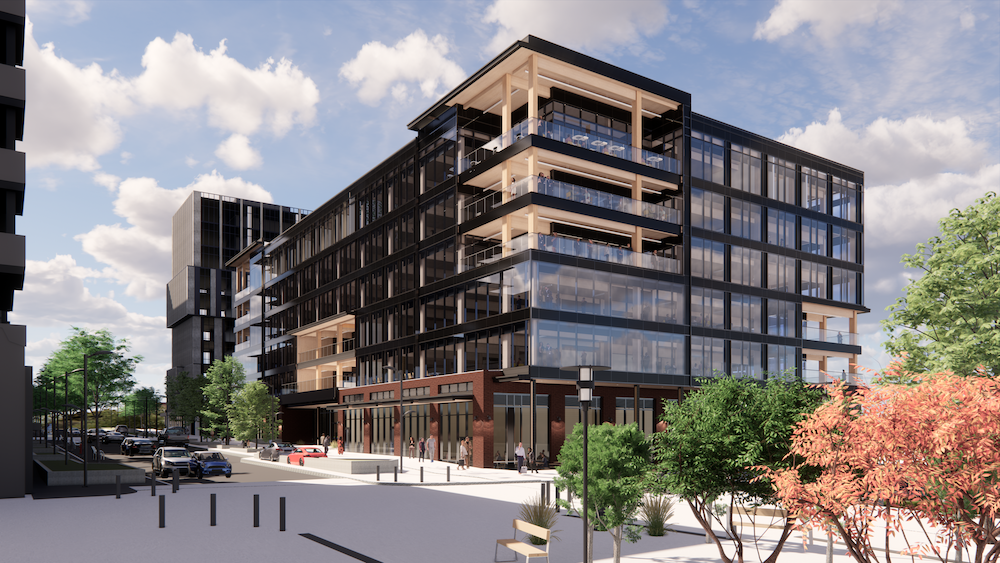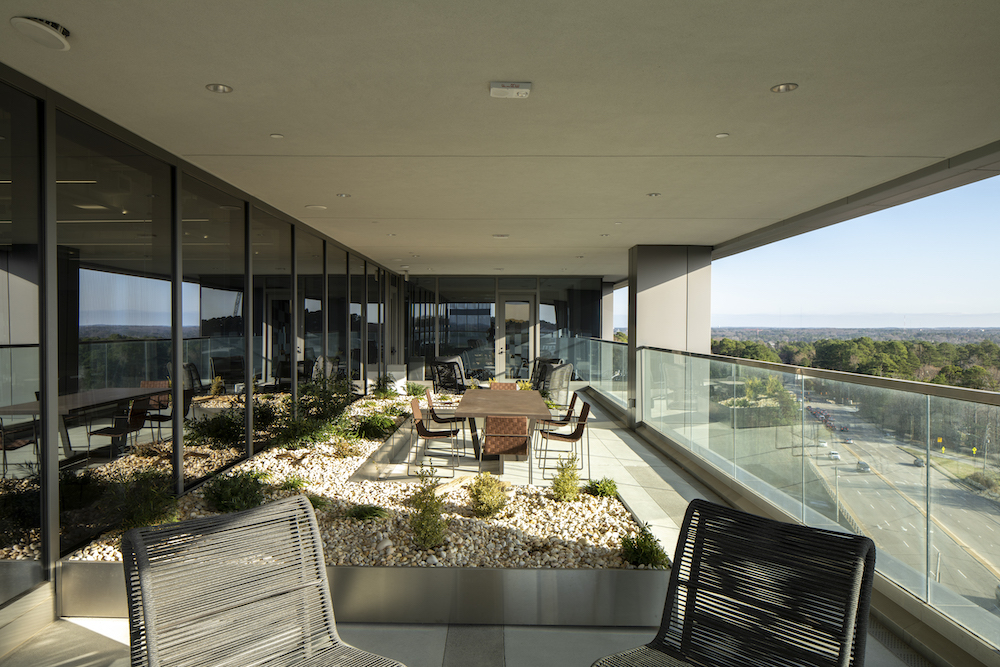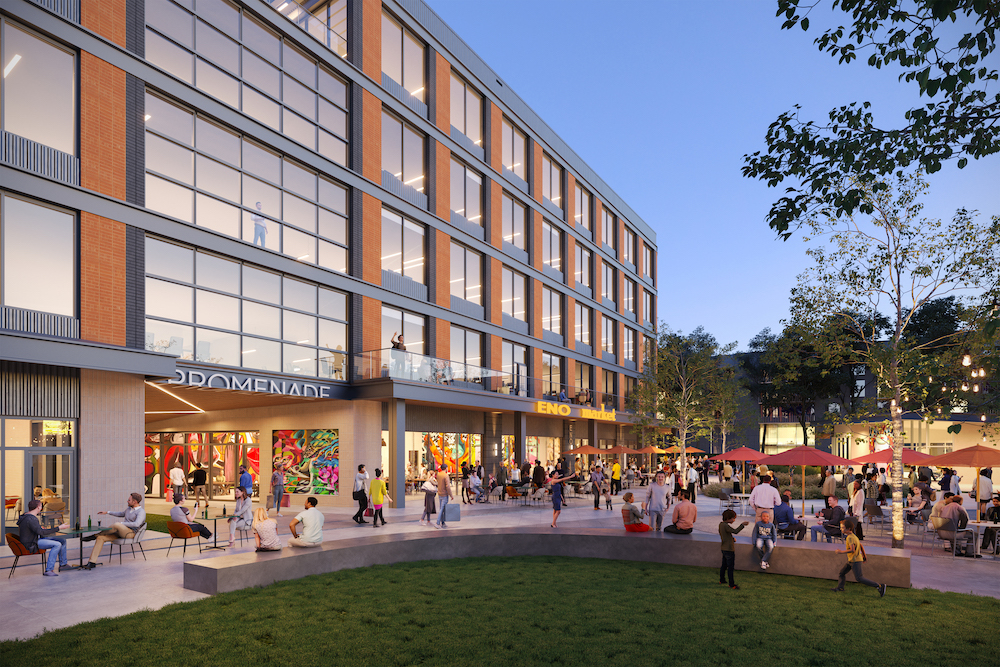Sanjeev Patel and Shannon Robinson of Duda|Paine explore creating truly sustainable workplaces to attract people back to the office.

Many companies and their employees want to return to the office, but our collective perspective has changed after extended work-from-home cycles. The public has also gained a greater awareness of climate change and the built environment’s impact on our health and daily experiences. Designing a workplace to attract people back to the office involves embracing a combination of strategies including material advancements, emerging technologies, improvements in energy efficiency and enhanced environmental quality.

Material Advancements
Mass timber construction—a well-used structural system in Europe for decades—was a novelty in the United States before the pandemic. Now, this renewable, low-carbon structural alternative is here to stay as a desirable option in our sustainable design toolkit.
Engineering systems and building codes are advancing their language to include mass timber strategies and more jurisdictions are adopting it as a structural alternative. This progress allows for taller mass timber structures than before. New manufacturers are emerging, and architects are pushing the creative boundaries of how mass timber is used. Downtown South, a project underway in Raleigh, North Carolina, uses mass timber elements such as cross-laminated timber (CLT) floor panels and glue-laminated (glulam) columns alongside wood elements in balconies and interior spaces to add warmth. The result places sustainable design at the heart of the project’s identity.
Mass timber promises to be a more sustainably manufactured material than both concrete and steel, requiring less energy to produce and less material mass thanks to its higher strength-to-weight ratio. Reducing carbon is a growing trend. Here, too, mass timber presents an advantage, as steel and concrete production generate significant carbon emissions. As market demand for this structural system accelerates, the long-term environmental impact of mass timber depends on it being sustainably harvested.
Sustainable strategies are also directly tied to many aspects of workplace wellness. Being surrounded by warm, natural materials has proven beneficial to our experience of spaces. Thus, mass timber adds wellness features to the material’s value as a sustainable, lower-carbon alternative.

New Technologies
Manufacturers continue to push the performance and aesthetics of electrochromic glass technology. A variety of options exist, from glass that merely darkens in direct sunlight and transitions to clear when not, to exterior glass that becomes mirror-like or opaque and interior privacy glass that can change a wall from transparent to opaque to create privacy. Each type is powered by a different technology that moves lithium ions using low-voltage conduction between layers of glass.
Owners, developers and tenants, involved in the Advance Auto Parts Headquarters in Raleigh, North Carolina, are interested in this technology because it improves the interior experience for users, saves energy costs, and protects fixtures and furnishings from the damages of direct sunlight. On the exterior, advancement in electrochromic technology brings improved consistency and aesthetics in the material’s appearance. On the inside, glare and solar heat gain are dramatically reduced.
The selection of other high-performing exterior materials, such as the high thermal properties of ultra-high-performance concrete (UHPC) over traditional masonry and sustainably manufactured and durable terracotta panels, also contribute to lowering a project’s carbon footprint, reducing cooling loads and saving on the energy required to run building systems.

Experience Quality
With increased public awareness of sustainability and wellness in buildings, companies are considering the features their employees want to ensure they’re returning to a healthy and safe workplace. The inclusion of open-air balconies, sky terraces and lobby areas that extend to ground level plazas add spots for community building and provide an alternative place to work or meet in the fresh air.
Indoor air quality has become a vital building feature since COVID. Ensuring good quality air inside offices involves both the shape and orientation of the building and how fresh air is brought inside through air handling systems.
Sustainable features can double as amenities in architecture: access to the outdoors, nearness to shopping, walkability and proximity to home and restaurants, options for where to work to suit individual comfort, and access to fresh air and natural light. These features tie sustainability and wellness together. The new Horseshoe at HUB RTP in Research Triangle Park and Glen Lennox development in Chapel Hill combine many of the strategies noted above to create desirable community spaces tied to amenities like nature trails and recreational sites.

Climate Forward
Beyond many of the familiar standards for workplace sustainability, two trends have emerged around future energy and material sources. Tech companies are driving interest in energy sources through building electrification. These clients look into the future and want their offices to operate on electricity that comes from clean sources versus coal-fired and nuclear plants.
Companies are also conscious of where materials come from. The first step is to source locally, when possible, but at a higher level, they look for materials with a low carbon footprint, that use less plastic, and come from places with equitable labor practices. Internally, we are removing items from our material library that are environmentally problematic, such as wood products that utilize restricted or endangered natural resources, with an intent to only specify sustainably harvested wood. Resiliency is also a factor—people want to use quality, durable and easy to maintain materials to create a resilient building that will conserve resources in the long-term.
We believe longevity goes beyond sustainability, energy efficiency and material quality. Beauty —that intangible and subtle aspect of design—is essential. If our workplaces are beautiful, then people will want those spaces to endure for future generations. A truly sustainable workplace marries resource conservation, climate sensitivity, equitable sourcing, enduring quality, and, equally important, beauty.

